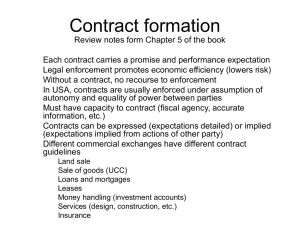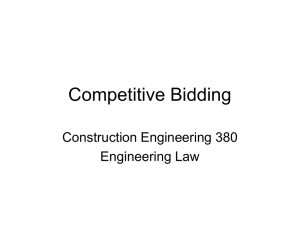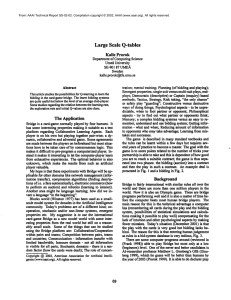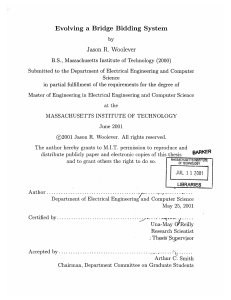Project Relationships Legal forms of business
advertisement
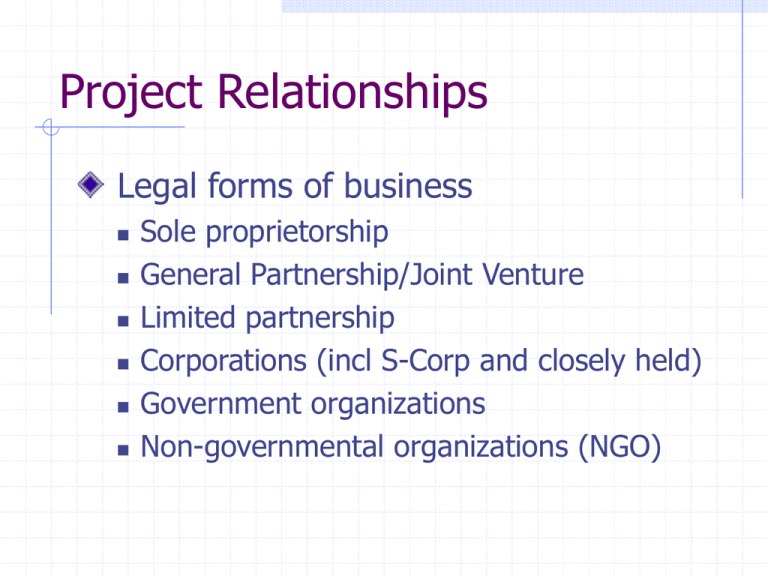
Project Relationships Legal forms of business Sole proprietorship General Partnership/Joint Venture Limited partnership Corporations (incl S-Corp and closely held) Government organizations Non-governmental organizations (NGO) Project Relationships Many relationships on a project Owner-builder contract Employee-employer contract General contractor-subcontractor Principal-agent Principal- Independent Sale of Goods (UCC governs) Project Relationships Employment contracts Typically at-will Employer assumes liabilities Employee has limited power (fiscal agency) Project Relationships Subcontracts Written legal agreement for performance of a segment of the work NOT considered at will Can have furnish only, furnish and install, install only, or design, furnish and install subcontract Project Relationships Principal-Agent Owner-architect/engineer Owner- construction manager Architect, engineer, construction manager, are agents of the owner (principal) Must act in the best interest of the owner Agents have a fiduciary responsibility Project Relationships Principal-Independent More arm’s length than agent contract Sole responsibility clauses Principal not responsible for actions of the independent Principal cannot specify means and methods Independent need not act in best interest of the principal Project Relationships Uniform Commercial Code Stipulates the rights and responsibilities for buyers and sellers of goods Doesn’t apply to services contracts Codifies shipping, title, insurance, transit risk, etc. Project Relationships Project delivery systems Traditional: owner- architect (agency) provides oversight on owner-contractor (independent). Owner assumes risk Construction Management- Owner- CM (agent) coordinates with Owner-architect (agency) and Owner-Contractor (independent) CM assumes risk for a fee Design-Build- Owner- DB Company (agent or independent) DB assumes risk for fee- fast and economical, 70-90% of jobs in Europe and Japan Bidding Mistakes Contract formation is: Offer-Acceptance-Consideration (payment) Offer to perform is accepted, offer to pay is accepted Must have legal capacity and be for a legal purpose, entered into without fraud or force Bid is an offer- can be withdrawn prior to acceptance. Once accepted verbally or in writing, it becomes binding Bidding Mistakes Acceptance must reflect terms of the offer If changes are made, it becomes a counteroffer Consideration is value given to party in return for performance Whenever scope changes, consideration changes Bidding Mistakes Legal capacity- 18 years, chartered, tax ID, mental fitness, fiscal agent Legal purpose- contract must be for a legal act Fraud- nondisclosure or misrepresentation with intent to deceive (must be reliance and damage) Force- offer accepted under duress Voidable contract can be rescinded Bidding Mistakes Mitakes Unilateral- one party mistake, won’t alter the contract unless patent Mutual- both parties mistake, voidable by either party Transcription error- oral agreement not accurately reflected in written version- can be reformed, but there is a high burden of proof. Bidding Mistakes Mistakes in the bid Federal- rescission or reformation State rescission only (major error, before start of construction) Subcontract governed by states onlymajority make bids irrevocable for a reasonable time if used by the contractor in their bid (promissory estoppel) Bidding Mistakes Promissory estoppel allows for bud shopping, which is technically legal but very unethical A few jurisdictions allow subcontracts bids to be revoked prior to acceptance California- bid is revocable unless contractor makes a conditional acceptance Telephone bids are valid offers accept for material purchases over $500

